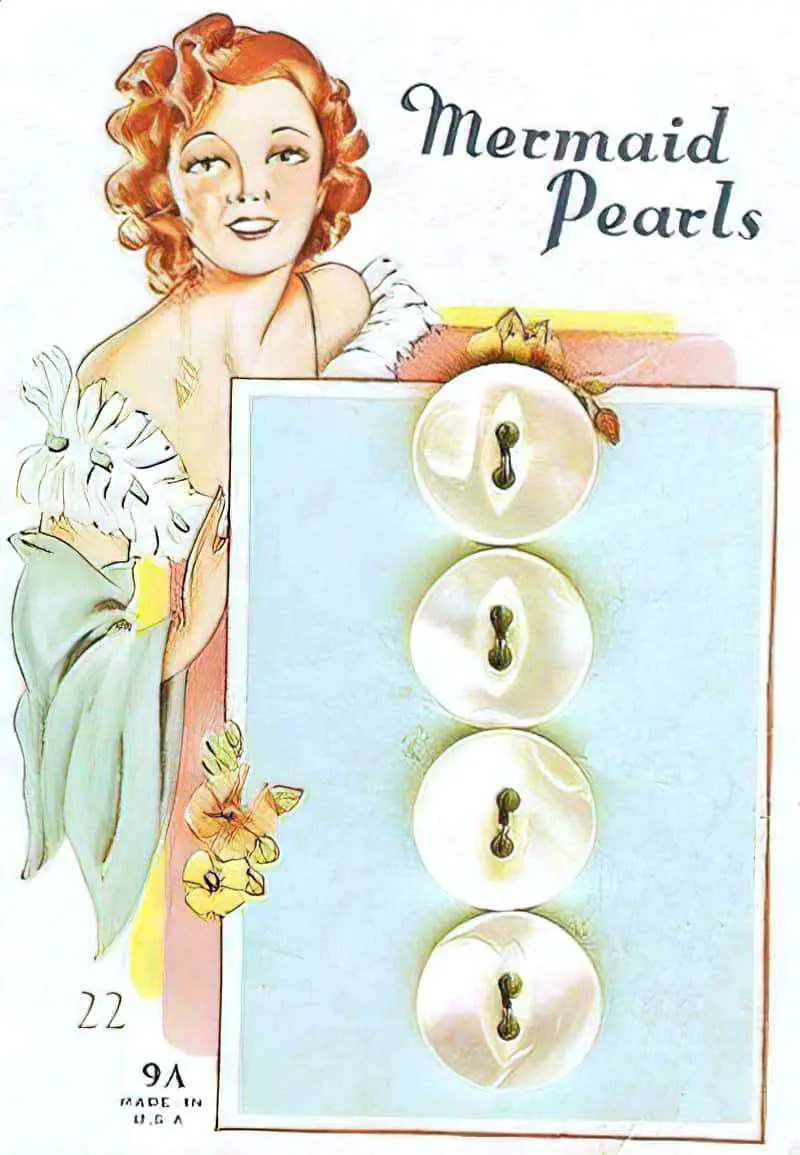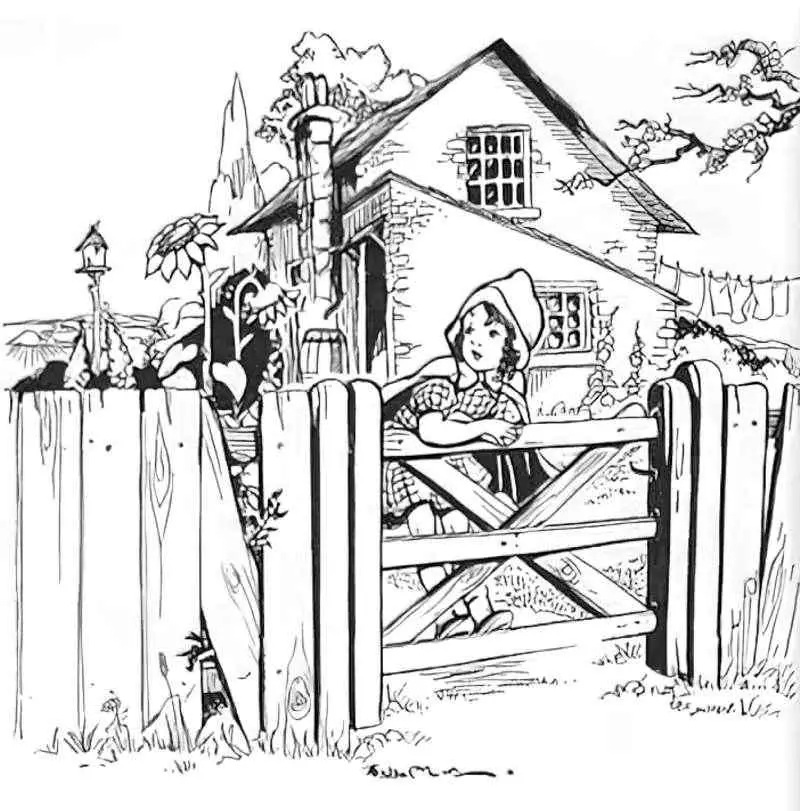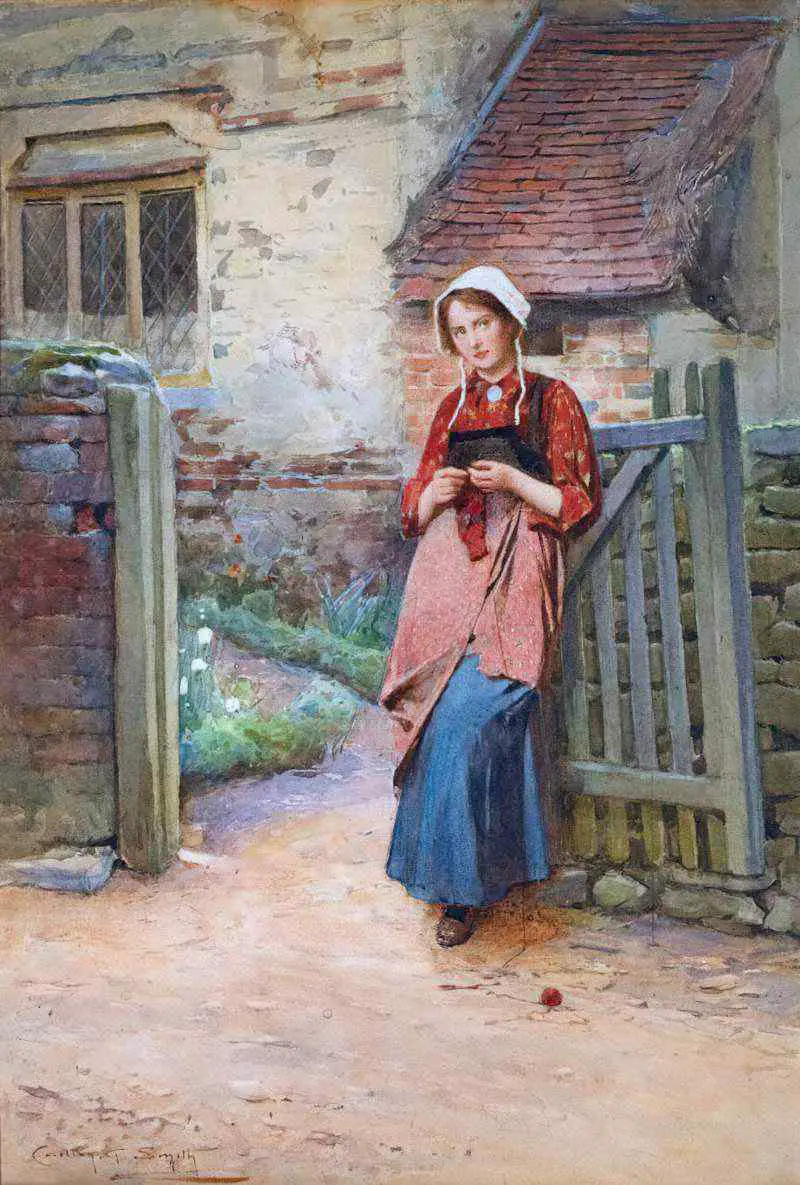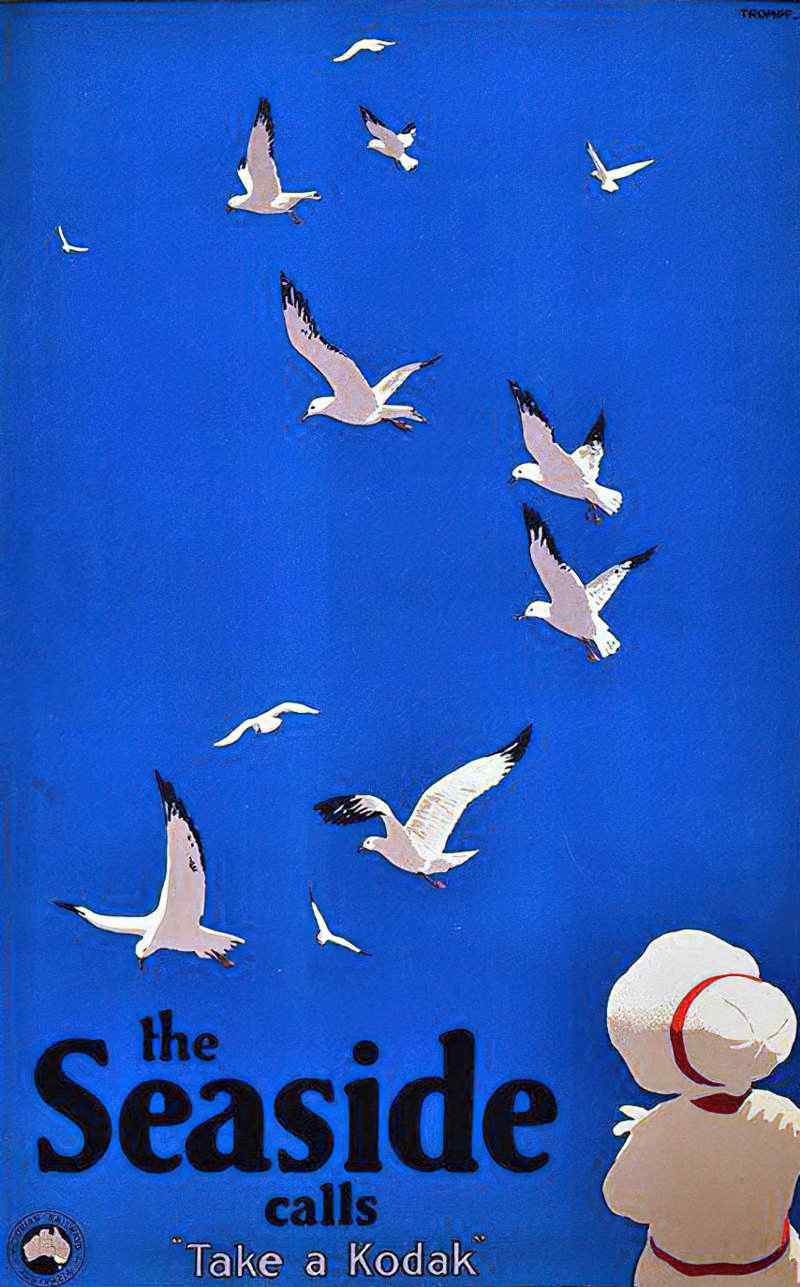“How Pearl Button Was Kidnapped” is a modernist short story by Katherine Mansfield, published 1912. At its heart, “Pearl Button” is a story about a clash of two cultures seen through a child’s eyes.
This story plays out as a duality of restriction and freedom. The European settlers are restricted while the Māori people enjoy freedom. “Pearl Button” is the only story in which Mansfield wrote about Māori. Her treatment of Māori from a white perspective was typical for the era — a romanticized opposition between Western and non-Western cultures. Mansfield came back to the idea of colonial constriction in later stories but focused on white New Zealanders.
SETTING OF “HOW PEARL BUTTON WAS KIDNAPPED”
The Māori of New Zealand lived in a more communal way than New Zealand’s Pākehā immigrants. Pākehā arrived in Aotearoa and immediately started sectioning up the space — from land down to living quarters. While European settlers lived in little houses, Māori people did not live like this. The pā can refer to any Māori village or defensive settlement, and is the centre of a Māori community, extending the concept of family out beyond the traditional nuclear family by European concept. Mansfield grew up alongside Māori pā culture and would have noted the differences.
The story “How Pearl Button Was Kidnapped” juxtaposes two ways of living — the European way of living in segmented ‘little boxes’ versus the freer, more sensual Māori way of life, closer to nature. Pearl Button herself prefers the Māori way of life. Since Pearl is the focalising character, the reader is encouraged to share in her view.
There’s another kind of juxtaposition in this story as well, a really interesting one, and it was the first time Mansfield had used it. “How Pearl Button Was Kidnapped” was the first time Mansfield used narrative parallax.
Mansfield’s ironic use of parallax to suggest that the man’s experience of the world is multifaceted also marks the particular modulation into a selective, restricted perspective, which is Impressionistic in concept. She employs this technique haphazardly, beginning with “How Pearl Button Was Kidnapped” (1910) and ending with “Miss Brill” (1920).
There is no consistent development. The method depends on a single device: the restricting of the perspective and knowledge of a focaliser-character into a broadening, more objective narrator’s one. He is not emotionally detached from the scene, but capable of perceiving it from a great distance. It often involves an initiation, a sudden awareness or enlightenment (epiphany) of some profound significance.
The imposition of narrative distance on a scene of intense emotional concern on the part of the participant(s) creates an irony of perspective which often suggests the isolation of individual human beings, their lack of consequence in the universal flux of life, their diminutive significance as seen from a superior vantage point and their defiant private inflation of the significance of their own lives and the events that surround them.
One of the best examples of this method can be found in “The Little Governess“, where the nameless, inexperienced young governess is made aware of her fellow-travellers, of herself, and reality outside her. At the end of the story she is isolated from everyone because of her own inconsistent behaviour. She feels hopelessly insignificant and deflated by events.
Katherine Mansfield and Literary Impressionism by Julia van Gunsteren

STORY STRUCTURE OF “HOW PEARL BUTTON WAS KIDNAPPED”
“How Pearl Button Was Kidnapped” is basically a carnivalesque story. If this were a children’s picture book, the kidnappers might be an animal — let’s say a cat in a hat — and there would be no police officers bringing the child back — the parents wouldn’t notice she’d gone. In a carnivalesque story the child escapes into fun.
Of course, Mansfield’s story has that very dark layer because Pearl Button really is kidnapped within the world of the story. Pearl has an Unexpected Emotional Reaction. We expect children to be distraught when taken away from their natal homes. But what if a child is so young and so detached from their family that one family could easily be switched out for another? Isn’t this the horror that gave rise to an entire category of changeling stories around the world?
Throughout her ‘kidnapping’, Pearl experiences positive emotions that burgeon out of bodily experience. The women first see her in the joyful, childlike act of swinging on a front gate. They reciprocate her motions by ‘waving their arms and clapping their hands together’. Pearl’s responsive laughter reveals that her primary means of experiencing the world is through reactive and embodied emotion. Later, she will cry when tired and confused, laugh when entertained by funny faces, and scream when she sees the ocean. She learns to enjoy the sea by entering it with the trusted woman, whom she is hugging and kissing at the moment she sees the ‘little blue men’ coming to carry her back home.
Katherine Mansfield and Psychology


SHORTCOMING
Pearl’s problem is that she’s a little girl severely constricted by her European life. The story opens with her symbolic swinging on the gate.
Pearl clearly goes willingly with the women and never complains. We assume she wants to be there the whole time, though we might read the story a slightly different way — Pearl would have been taught not to complain. This is part of the restriction of being a girl in white society in that era. When she sat in the dust while eating a peach she might have complained when she spilled the juice on her petticoat. But she doesn’t complain — she instead just tells the women what has happened, and only because she is frightened of what comes next. Ruining pretty clothes is clearly a terrible misdemeanour where Pearl Button comes from.
DESIRE
In any carnivalesque story the main character (usually a child or child stand-in) only desires to have fun.
Pearl is itching to get out of that gate, out into the world where she can be closer to nature and run around with fewer clothes hampering her movements. Pearl doesn’t know this. She doesn’t know what she’s missing until she’s taken out of her European life, full of boundaries and restrictions.

OPPONENT
For plotting purposes, the opposition is the cadre of policemen who come to ‘save’ Pearl from her fun. The reader will likely feel the opponents are the abductors because popular ideology would have it that children should stay with their natal families at all costs. This feeling is even more true today than it was in 1912 when first peoples’ children around the colonised world were regularly abducted from their families by white people (especially in Australia).
The story works with long-established tropes about the colonised racial other who experiences the world as a body rather than as a mind. The two women who encounter Pearl and bring her away with them are ‘big’ and walk slowly ‘because they [are] so fat’. These large feminine bodies are, like that of the grandmother in “The Little Girl”, extremely comforting for the young protagonist. Pearl ‘nestles’ into one woman’s lap, where her physical sensations bleed into a contented emotional state: ‘The woman was warm as a cat and she moved up and down when she breathed, just like purring […] Pearl had never been happy like this before.
Katherine Mansfield and Psychology
The intrigue of this story rests upon the reader feeling worried for Pearl. A long history of storytelling has taught us this much: A taken child is in danger. Think of the Greek myths, with those terrible women who eat other people’s babies because they can’t have children of their own. They wreak havoc by eating other people’s babies instead. Lamia is a standout example.
So the reader expects Pearl to come to harm, but Katherine Mansfield’s kidnapper is more of a nymph than an ogre; rather than devour the child, these proxy nymphs taker her away to look after her. Mythological nymphs are especially drawn to looking after children who have been abandoned by their mothers. Pearl Button hasn’t been abandoned, but when the Māori women find her, she is on her own, with no whanau in sight. An unusual situation for a child, according to a Māori worldview at the time.
To further the analogy of the Greek nymphs, the Māori end up by the sea. The seaside could be coded as a New Zealand equivalent of the river Ilissos, where nymphs like to frolic in the water and enjoy the shade. Importantly, Greek nymphs are not evil. They don’t even have any backstories of their own — they are about potential (young women waiting to be married).
PLAN
Pearl is too young to be a ‘planner’ as such. The adults have the plan — they let Pearl move about freely by stripping her of most of her constricting Edwardian clothing. They let her frolic on the beach and have the new experience of playing in waves. Through the focalised viewpoint of Pearl, it seems these abductors exist only to have fun themselves. We never learn why they’ve taken Pearl or if they ever intended to return her. I doubt the Māori characters who took Pearl didn’t see it as abduction, but rather a casual sharing of the parenting load, fully intending to return her at the end of the day.
BIG STRUGGLE
When the Māori mother undresses Pearl she is preparing Pearl for a metaphorical Battle. In a carnivalesque story there’s no Battle as such — instead the fun gets funner and funner, culminating in peak fun before something or someone intervenes to bring everything to an end. The child returns to their normal life in a home-away-home structure.
But there’s a structural difference between “Pearl Button” (a lyrical short story) and, say, The Cat In The Hat or The Tiger Who Came To Tea — carnivalesque picture books for preschoolers. “Pearl Button” stars a preschooler, but is clearly not for a preschool audience.
The difference is that Pearl has some sort of revelation. She doesn’t understand it, but she feels it at a sensory level. Mansfield makes use of the sea…
ANAGNORISIS
She made a cup of her hands and caught some of it. But it stopped being blue in her hands.
Throughout the story, Mansfield has mentioned colour over and over — Pearl notices the different colours of things. When witnessed as a whole, the ocean looks blue but not when she tries to hold a tiny portion of it in her hands. This detail stands in for a Anagnorisis — no doubt unformed and preverbal — after all Pearl is still a young child. What is the nascent revelation? That things look lovely from this distance (as a temporary visitor) but as soon as she gets right into it the illusion disintegrates. Her day of fun with the Māori families is about to come to an end.
It is in fact the sensory experience of the ocean that provokes the most feeling from Pearl. Its warmth, wetness and unique visual properties — ‘it stopped being blue in her hands’ — get her to shriek, exclaim and throw ‘her thin little arms round the woman’s neck’. During this time away from the restrictive civilisation of the ‘House of Boxes’, Pearl, unlike young Kass, does not have to fight a natural order in which feeling comes first.
Katherine Mansfield and Psychology
NEW SITUATION
We extrapolate that the police will charge the abductors and Pearl will be returned to her family. I doubt she’ll suffer trauma because her big day out has been a lovely experience. But her freedom will probably be curtailed from now on. I doubt her mother will let her swing on the front gate without close supervision. She’ll be cautioned against talking to strangers. Pearl will be more fearful from now on. Her days of childlike bliss and innocence are over.

COMPARE AND CONTRAST
- Another story in which Mansfield explores how affectionate physical contact plays into the emotional relationships between children and adults is “The Little Girl“.
- “The Representation Of The Maori By European Artists In New Zealand, Ca 1890-1914″ by Leonard Bell elaborates on how native New Zealanders were fictionalised by colonial settlers.
